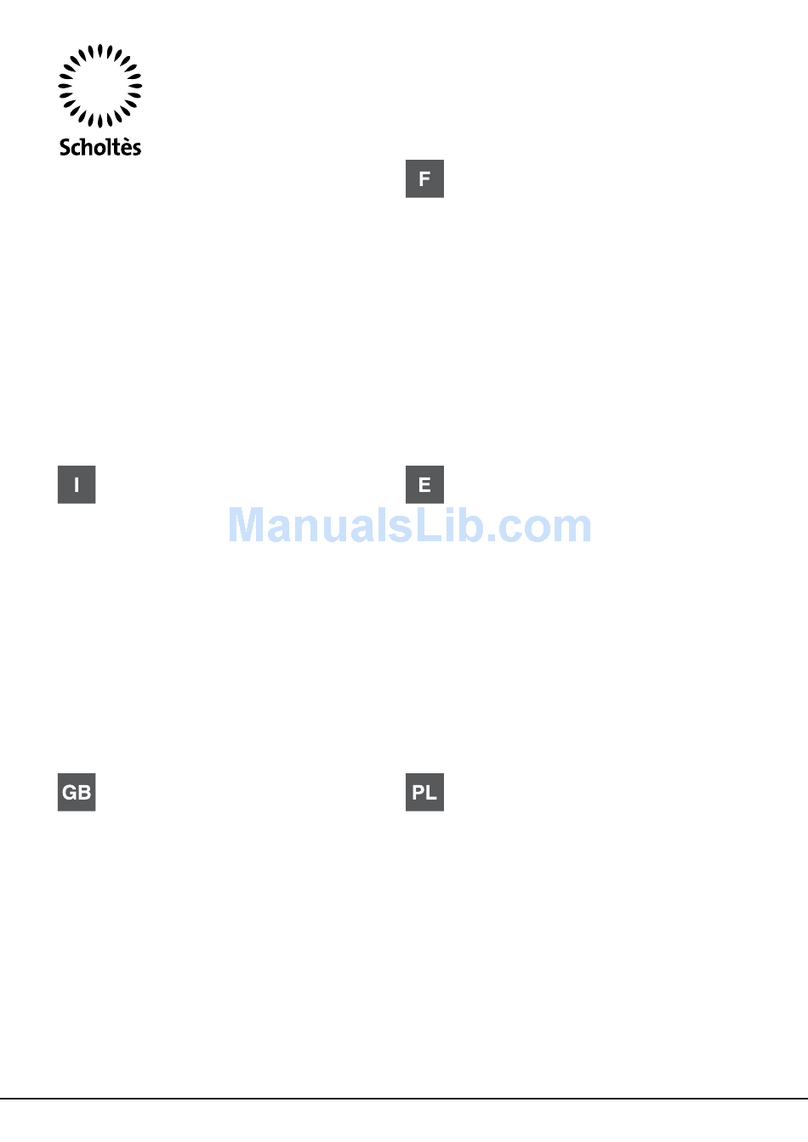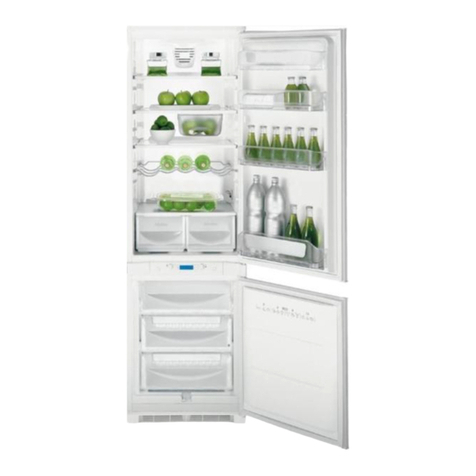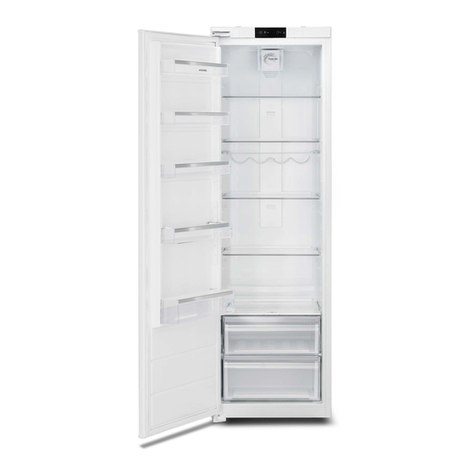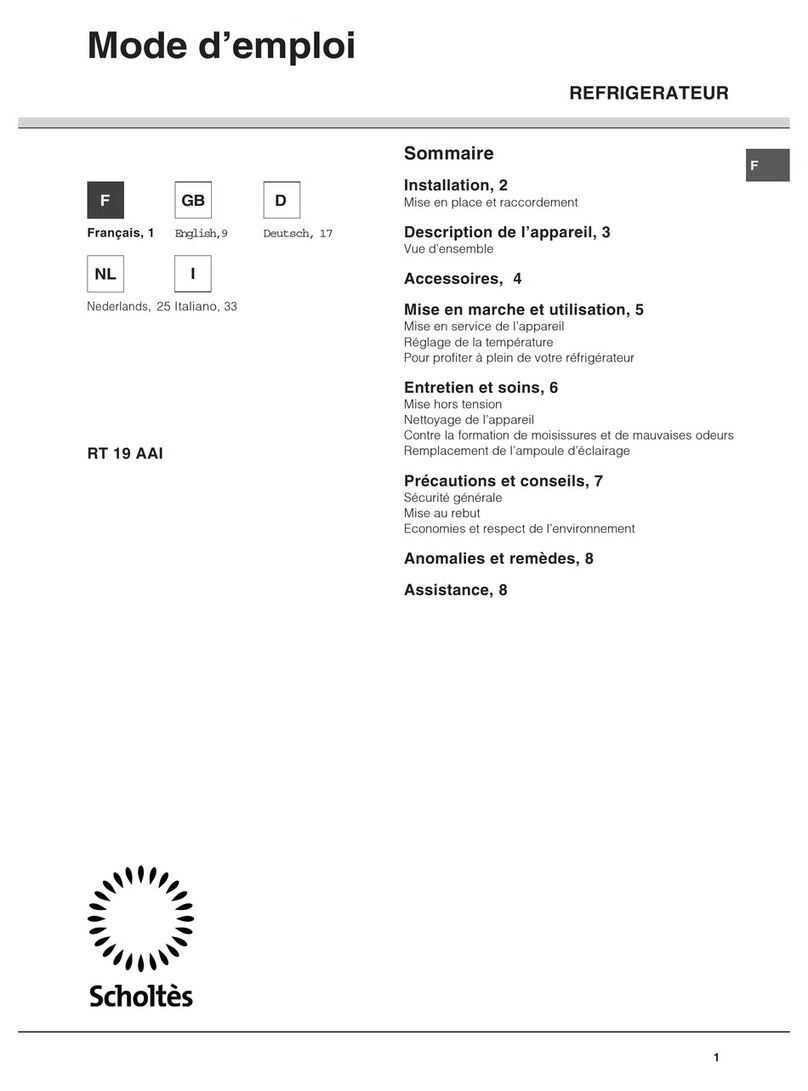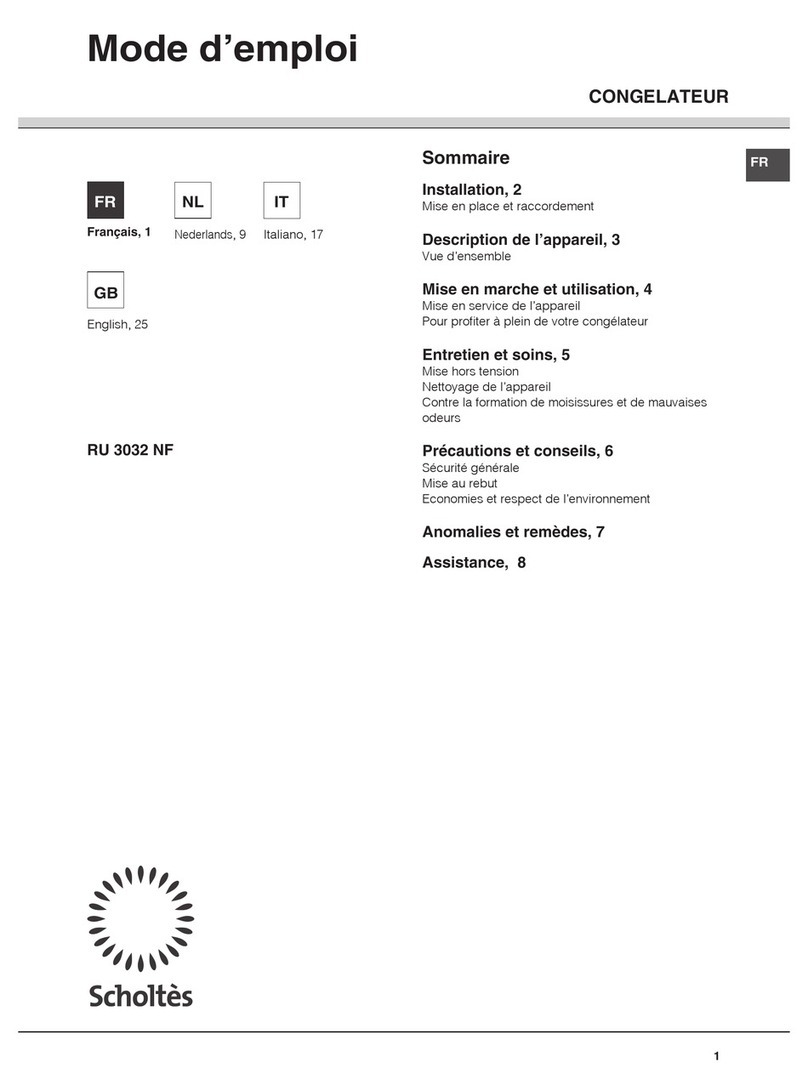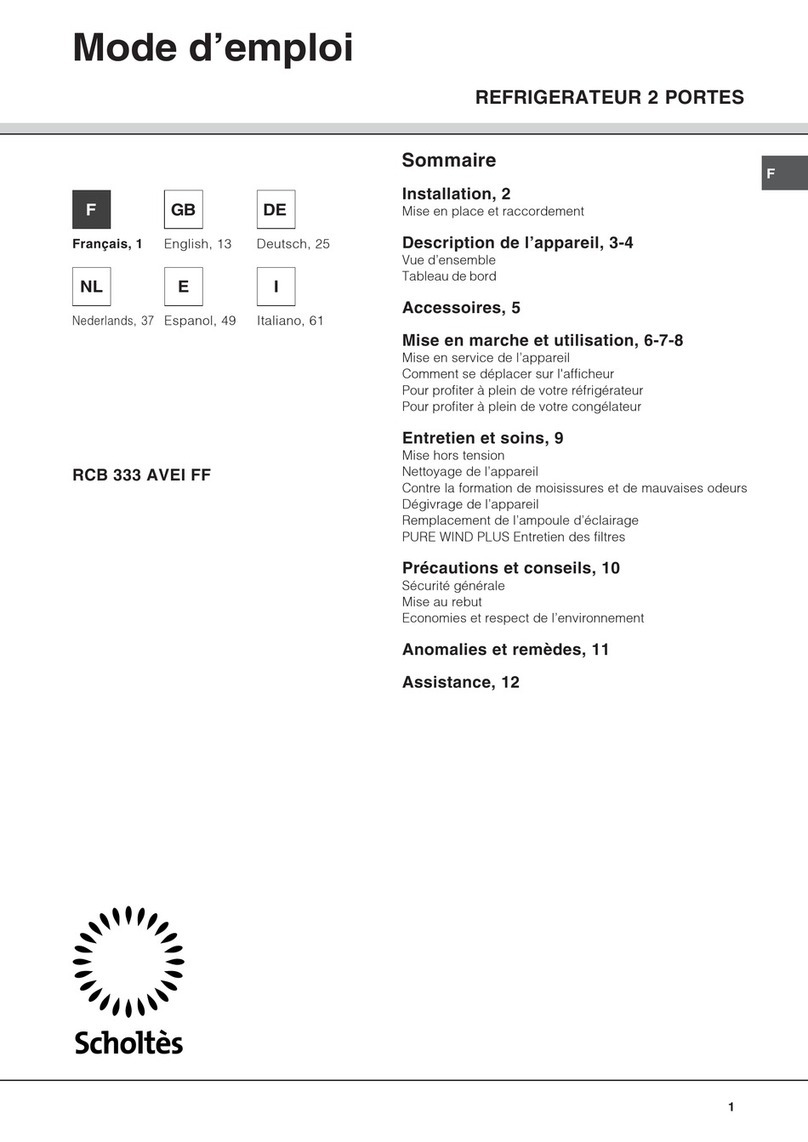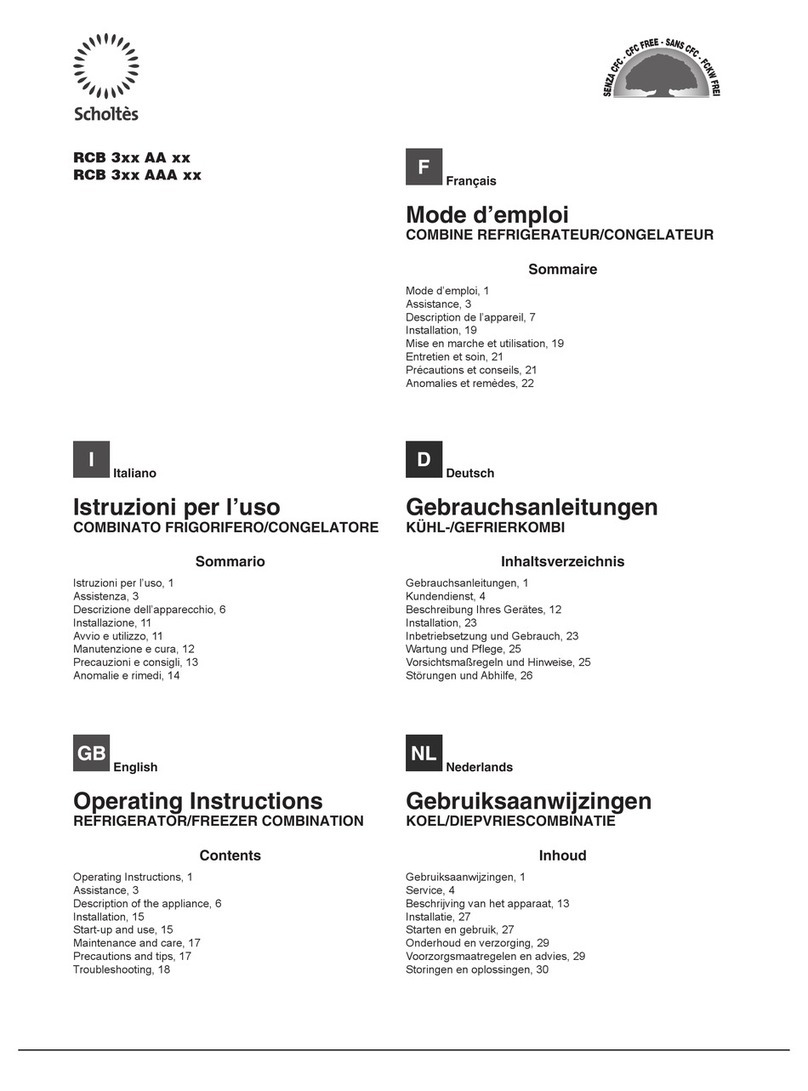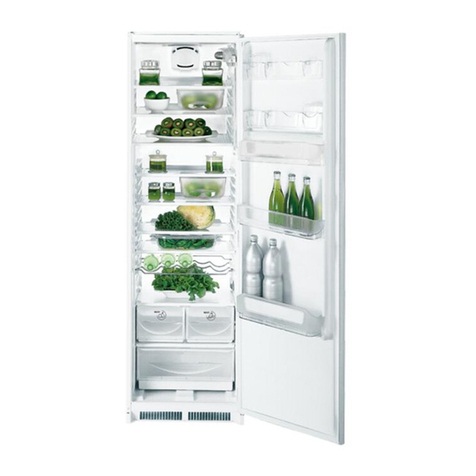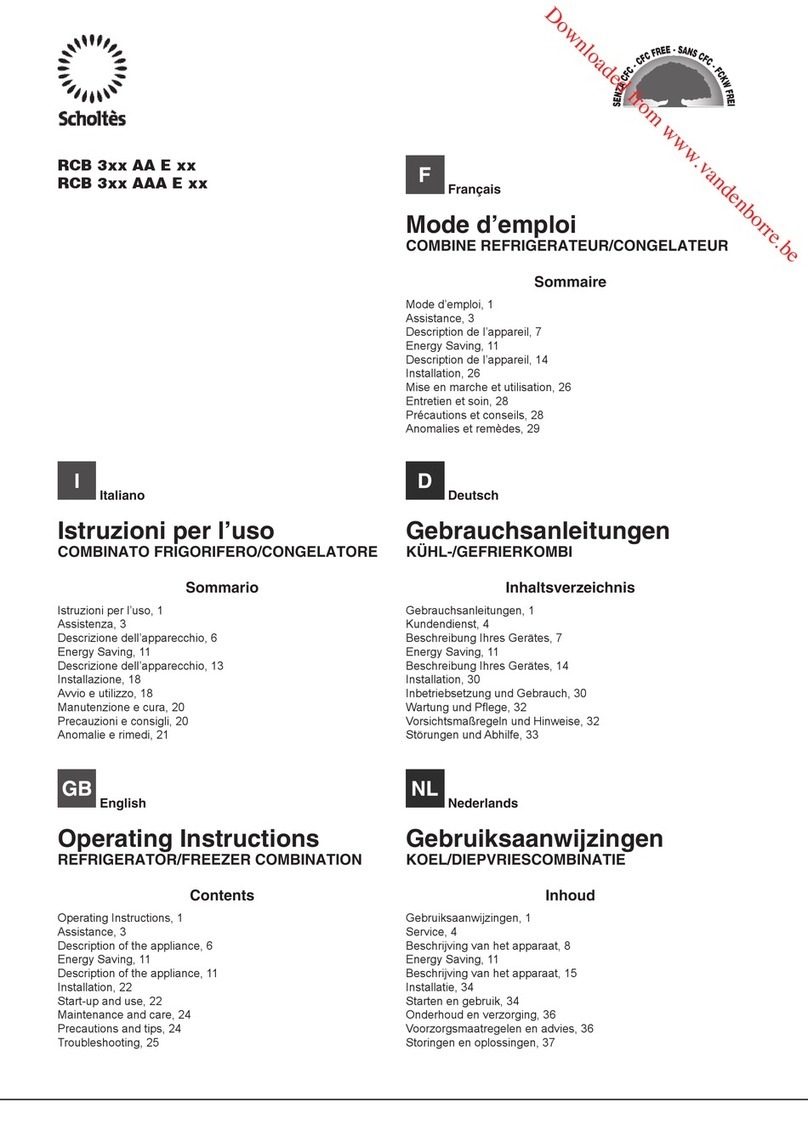
F
7
Précautions et conseils
! Lappareil a été conçu et fabriqué conformément aux
normes internationales de sécurité. Ces conseils sont
fournis pour des raisons de sécurité et doivent être lus
attentivement.
Cet appareil est conforme aux Directives
Communautaires suivantes:
- 73/23/CEE du 19/02/73 (Basse Tensione) et
modifications suivantes;
-89/336/CEE du 03/05/89 (Compatibilité
Electromagnétique) et modifications suivantes;
- 2002/96/CE.
Sécurité générale
Cet appareil a été conçu pour un usage familial, de t pe
non professionnel.
Cet appareil qui sert à conserver et à congeler des
aliments ne doit être utilisé que par des adultes
conformément aux instructions du mode demploi.
Cet appareil ne doit pas être installé en extérieur, même
dans un endroit à labri, il est en effet très dangereux de
le laisser exposé à la pluie et aux orages.
Ne touchez pas à lappareil pieds nus ou si vos mains
ou pieds sont mouillés ou humides.
Ne touchez pas aux parties refroidissantes: vous
pourriez vous brûler ou vous blesser.
Pour débrancher la fiche de la prise de courant, sortez
la fiche, ne tirez surtout pas sur le câble.
Avant deffectuer toute opération de netto age ou
dentretien, débranchez la fiche de la prise de courant.
Il ne suffit pas de placer le bouton de REGLAGE DE LA
TEMPERATURE sur (appareil éteint) pour éliminer
tout contact électrique.
En cas de panne, nessa ez en aucun cas daccéder
aux mécanismes internes pour tenter de réparer
lappareil.
Ne pas utiliser, à lintérieur des compartiments de
conservation pour aliments congelés, dustensiles
pointus et coupants ou dappareils électriques dun t pe
autre que celui recommandé par le fabricant.
Ne pas porter à la bouche des glaçons à peine sortis du
congélateur.
Cet appareil nest pas prévu pour être utilisé par des
personnes ( compris les enfants) dont les capacités
ph siques, sensorielles ou mentales sont réduites, ou
des personnes dénuées dexpérience ou de
connaissance, sauf si elles ont pu bénéficier, par
lintermédiaire dune personne responsable de leur
sécurité, dune surveillance ou dinstructions préalables
concernant lutilisation de lappareil. Il convient de
surveiller les enfants afin quils ne jouent pas avec
lappareil.
Les emballages ne sont pas des jouets pour enfants.
Mise au rebut
Mise au rebut du matériel demballage: conformez-
vous aux réglementations locales, les emballages
pourront ainsi être rec clés.
La Directive Européenne 2002/96/EC sur les Déchets
des Equipements Electriques et Electroniques
(DEEE), exige que les appareils ménagers usagés
ne soient pas jetés dans le flux normal des déchets
municipaux. Les appareils usagés doivent être
collectés séparément afin doptimiser le taux de
récupération et le rec clage des matériaux qui les
composent et réduire limpact sur la santé humaine
et lenvironnement. Le s mbole de la poubelle
barrée est apposée sur tous les produits pour
rappeler les obligations de collecte séparée.
Les consommateurs devront contacter les autorités
locales ou leur revendeur concernant la démarche à
suivre pour lenlèvement de leur vieil appareil.
Economies et respect de
lenvironnement
Installez votre appareil dans un endroit frais et bien
aéré, protégez-le contre lexposition directe aux
ra ons du soleil et ne le placez pas près de sources
de chaleur.
Pour introduire ou sortir les aliments, nouvrez les
portes de lappareil que le temps strictement
nécessaire.
Chaque ouverture de porte cause une considérable
dépense dénergie.
Ne chargez pas trop votre appareil :
pour une bonne conservation des aliments, le froid
doit pouvoir circuler librement. Si la circulation est
entravée, le compresseur travaillera en permanence.
Nintroduisez pas daliments chauds: ces derniers
font monter la température intérieure ce qui oblige le
compresseur à travailler beaucoup plus en gaspillant
un tas délectricité.
Dégivrez lappareil dès que de la glace se dépose
(voir Entretien); une couche de glace trop épaisse
gêne considérablement la cession de froid aux
aliments et augmente la consommation délectricité.
Gardez toujours les joints propres et en bon état
pour quils adhèrent bien aux portes et ne laissent
pas le froid séchapper (voir Entretien).
